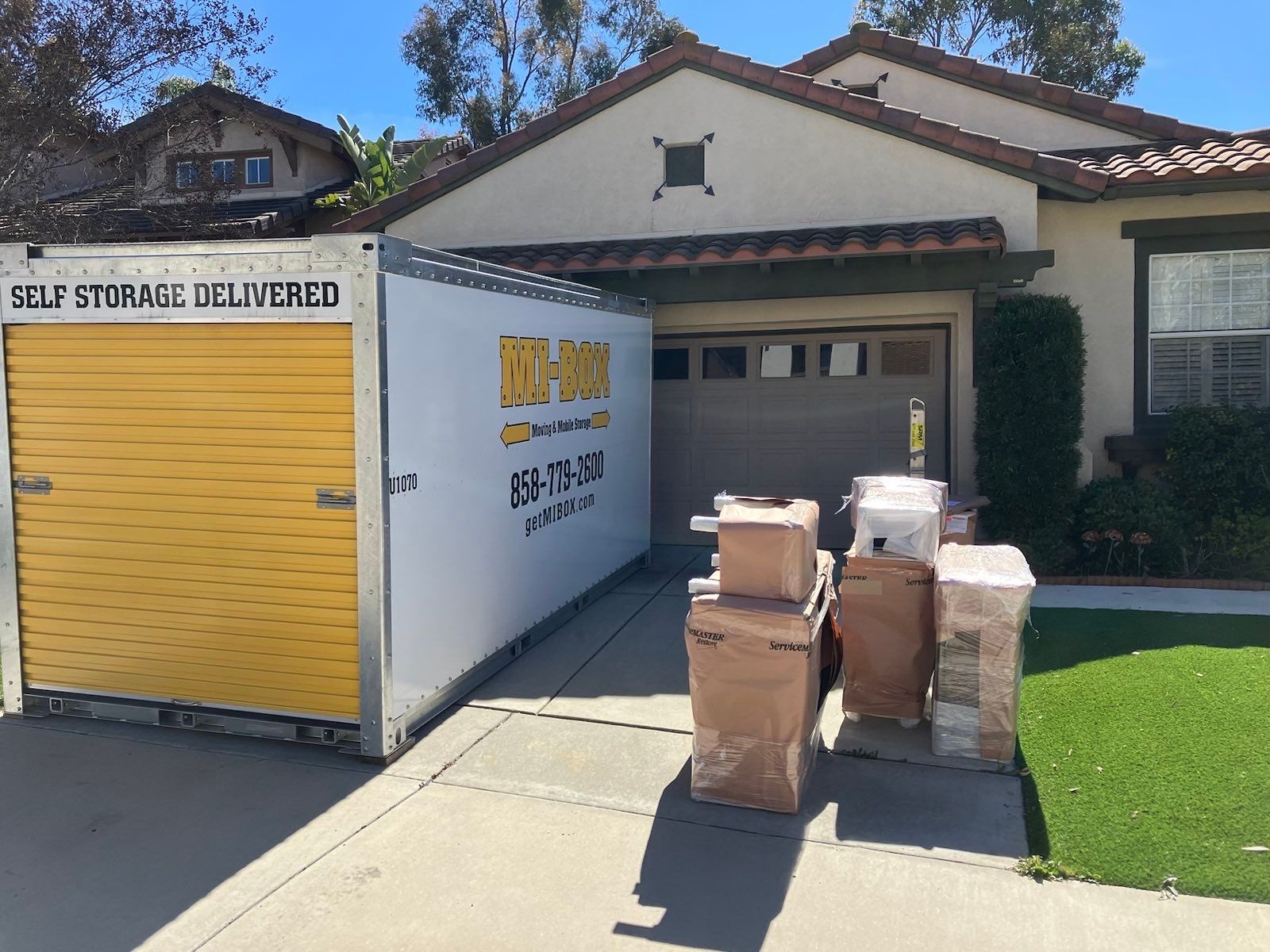Understanding Portable Storage Logistics: What You Need to Know Before You Rent

Renting a portable storage container offers unparalleled flexibility, but the success of your experience often hinges on a clear understanding of the logistical requirements. Being prepared allows for a seamless delivery, hassle-free usage, and an efficient pickup.
Do you have adequate clear space for the container delivery and pickup?
This is perhaps the most important pre-delivery consideration. Portable storage containers are typically delivered on a specialized tilt-bed truck or a system like PODZILLA®. These vehicles require ample space to maneuver, tilt, and safely place the container.
The Nitty-Gritty: You'll need more than just the footprint of the container. Delivery trucks often need:
- Width Clearance: Around 12-14 feet wide for the truck and container.
- Height Clearance: At least 14-18 feet of overhead clearance to accommodate the tilting mechanism and the truck itself (watch out for low-hanging wires, tree branches, roof overhangs, or carports).
- Straight-Line Clearance: A significant straight path, which can be anywhere from 60 to 120 feet long, depending on the container size (20-foot vs. 40-foot) and the delivery system, for the truck to pull away once the container is on the ground.
Pro Tip: Don't just eyeball it! Grab a tape measure and physically check your driveway, street, or desired placement area. Take photos or a video to share with the portable storage company if you have any doubts. Always factor in potential obstacles like parked cars, narrow gate openings, basketball hoops, or sprinkler heads.
What are the required ground surfaces for safe placement of the container?
While portable storage containers are sturdy, where they sit matters for stability and to prevent issues like uneven settling or door alignment problems.
The Nitty-Gritty: Ideal surfaces are:
- Level and Flat: This prevents the container from leaning, which can make doors difficult to open or close, and allows the weight to be distributed evenly.
- Firm and Stable: Paved surfaces like asphalt or concrete driveways are perfect. Gravel pads are also good options if compacted. Avoid soft ground, muddy areas, or significant slopes, as the container can sink or shift over time, especially when loaded.
- Good Drainage: Make sure the area drains well to prevent water from pooling around or under the container, which can lead to moisture issues or even rust over prolonged periods.
Pro Tip: If your desired spot isn't perfectly level, ask your provider if they can use wood blocks or shims to help stabilize the container. For longer-term placements on unpaved surfaces, consider laying down a gravel bed or even temporary wooden beams to provide a more stable and well-drained foundation.
What is the process for scheduling delivery and final pickup?
The scheduling process is usually straightforward but requires your proactive communication.
The Nitty-Gritty:
- Initial Booking: When you reserve your container, you'll typically select a preferred delivery date. Some companies offer specific time windows, while others provide a general delivery day.
- Delivery Confirmation: The company will usually confirm your delivery a day or two in advance, and some may even call you on the delivery day with an estimated arrival time. You often don't need to be present for the delivery if the site is clear.
- Pickup Scheduling: Once you're done with the container, you'll need to schedule the pickup. This is usually done online through a customer portal or by calling customer service. You'll specify if the container is going to a new location (for a move) or back to their storage facility.
Pro Tip: Always communicate clearly about door direction preference during delivery (e.g., "doors facing the garage"). When scheduling pickup, make sure the container is completely empty (if it's going back to the facility) and securely locked. Provide plenty of notice for pickup, especially during peak seasons, to avoid delays.
How far in advance do you need to book your container?
Portable storage isn't an "on-demand" service in the same way a taxi is. Planning ahead is key, especially during busy times.
The Nitty-Gritty:
- Off-Peak Season (Fall/Winter): A 1-2 weeks notice is often sufficient.
- Peak Moving Season (Spring/Summer & Month-Ends): During these high-demand periods, booking 2-4 weeks or even a month in advance is highly recommended. Popular container sizes can become scarce.
- Last-Minute Needs: While sometimes possible, last-minute bookings may limit your container size options.
Pro Tip: If your moving or project dates are firm, book your container as soon as you have a clear timeline. Even if you're not entirely sure, many companies allow you to reserve with a credit card and offer flexible cancellation policies without penalty, giving you peace of mind.
What happens if you need to extend your rental period?
Life happens, and plans change. Reputable portable storage companies understand this and offer flexible rental extensions.
The Nitty-Gritty:
- Monthly Rentals: Most portable storage services operate on a monthly rental cycle. Your initial rental often includes a certain number of days (e.g., 30 days), and after that, you're typically billed monthly.
- Extension Process: To extend your rental, you usually just need to notify the company before your current rental period ends. This can often be done online or with a phone call.
- Costs: Extended periods will continue to accrue monthly rental fees. It's rare for these to change significantly unless the initial rental was part of a special promotion.
Pro Tip: If you anticipate needing the container for longer than initially planned, contact the rental company as early as possible. Always confirm the new billing cycle and any associated costs to avoid surprises.
You can maximize the advantages of portable storage for your project or move by being proactive and being aware of these logistical factors. This will guarantee that your experience is as stress-free and convenient as possible.
Do I need to worry about permits or HOA rules for my portable storage container?
Possibly! While portable containers offer convenience, local city ordinances or homeowners' association (HOA) regulations might have rules on temporary structures, placement duration, or even container aesthetics.
What's the best way to ensure my belongings are safe and sound inside the container, beyond just locking it? Beyond using a high-quality lock, the
best practice for interior security and protection involves strategic packing. Distribute weight evenly, utilize vertical space efficiently, and secure items with straps to prevent shifting during transit (even if just across your driveway). Consider using moisture absorbers for long-term storage or sensitive items, and ensure all boxes are sturdy and sealed.







